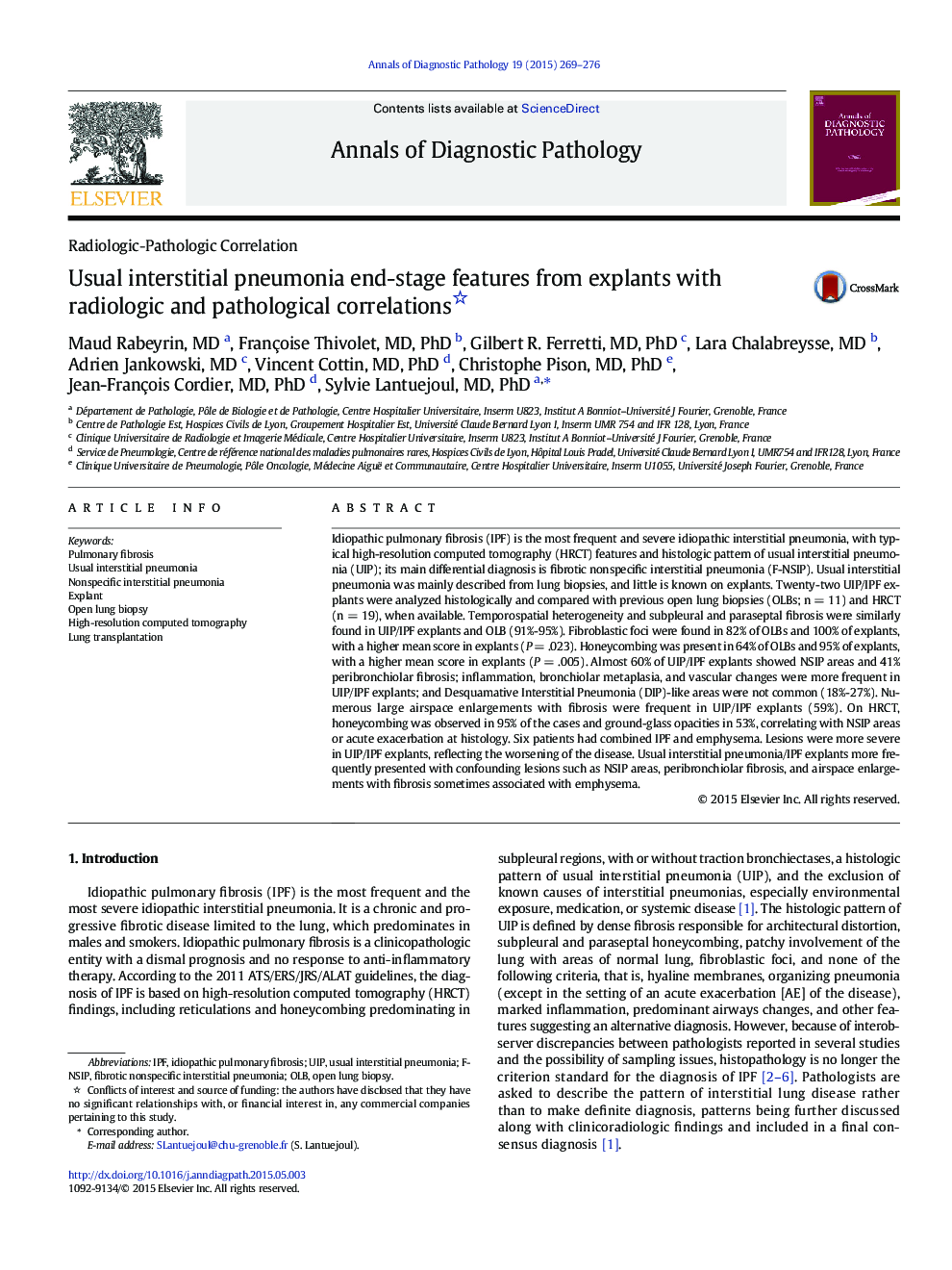| Article ID | Journal | Published Year | Pages | File Type |
|---|---|---|---|---|
| 4129781 | Annals of Diagnostic Pathology | 2015 | 8 Pages |
Idiopathic pulmonary fibrosis (IPF) is the most frequent and severe idiopathic interstitial pneumonia, with typical high-resolution computed tomography (HRCT) features and histologic pattern of usual interstitial pneumonia (UIP); its main differential diagnosis is fibrotic nonspecific interstitial pneumonia (F-NSIP). Usual interstitial pneumonia was mainly described from lung biopsies, and little is known on explants. Twenty-two UIP/IPF explants were analyzed histologically and compared with previous open lung biopsies (OLBs; n = 11) and HRCT (n = 19), when available. Temporospatial heterogeneity and subpleural and paraseptal fibrosis were similarly found in UIP/IPF explants and OLB (91%-95%). Fibroblastic foci were found in 82% of OLBs and 100% of explants, with a higher mean score in explants (P = .023). Honeycombing was present in 64% of OLBs and 95% of explants, with a higher mean score in explants (P = .005). Almost 60% of UIP/IPF explants showed NSIP areas and 41% peribronchiolar fibrosis; inflammation, bronchiolar metaplasia, and vascular changes were more frequent in UIP/IPF explants; and Desquamative Interstitial Pneumonia (DIP)-like areas were not common (18%-27%). Numerous large airspace enlargements with fibrosis were frequent in UIP/IPF explants (59%). On HRCT, honeycombing was observed in 95% of the cases and ground-glass opacities in 53%, correlating with NSIP areas or acute exacerbation at histology. Six patients had combined IPF and emphysema. Lesions were more severe in UIP/IPF explants, reflecting the worsening of the disease. Usual interstitial pneumonia/IPF explants more frequently presented with confounding lesions such as NSIP areas, peribronchiolar fibrosis, and airspace enlargements with fibrosis sometimes associated with emphysema.
